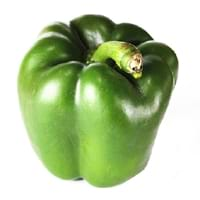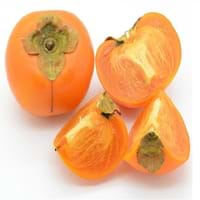Health Benefits
Arthritis treatment, Cancer prevention, Heart care
Cancer prevention, Heart care, Heat stroke treatment, Improves eye vision, Weight loss properties
General Benefits
Anti oxidant properties, Anti-inflammatory properties, Controls blood pressure, Digestive aid, Eye care, Helps in weight loss, Maintains healthy cholesterol level, Strengthens bones
Anti-inflammatory properties, Boosts immune system, Cures cough, Digestive aid, Fights against infections, Improves blood circulation
Skin Benefits
Anti-aging benefits, Treatment of skin diseases
Anti-aging benefits, Brightens and lightens complexion, Reduces wrinkles
Hair Benefits
Prevents hair loss, Promotes longer and healthier hair, Regulates hair growth
Promotes longer and healthier hair, Protects hair
Allergy Symptoms
Abdominal pains, Coughing, Eczema, Headaches, Hives, Redness of eyes, Sneezing, Swelling, Swelling of mouth, tongue or lips, Watery eyes, Wheezing
Abdominal pains, Anaphylaxis, Inflammation
Side Effects
Allergic reaction, Mouth irritation, Throat irritation
Diarrhoea, Might affect blood pressure level
Best Time to Eat
Along with meal, Don't consume at night and before bed, Don't eat after meal, Morning time (before lunch)
Along with meal, As a snack in the late afternoon, Don't consume at night and before bed, Morning time (before lunch)
Vitamin B5 (Pantothenic Acid)
Not Available
Vitamin C (Ascorbic Acid)
Vitamin K (Phyllochinone)
Calories in Fresh Fruit with Peel
Calories in Fresh Fruit without Peel
Not Available
Not Available
Calories in Frozen Form
Not Available
Calories in Canned Form
Not Available
Not Available
Calories in Jam
Not Available
Calories in Pie
Not Available
Type
Fruit vegetable
Berry, Tree fruit
Season
All seasons
Autumn, Winter
Varieties
Big Bertha, Yolo Wonder, Yankee and Fat n Sassy
Fuyu, Jiro, Gosho, Suruga, Hiratanenashi, Hachiya, Aizumishirazu, Yotsumizo, Yokono, Costata, Ormond and Tamopan
Color
Green
Orange, Red, Yellow
Inside Color
Light Green
Orange
Shape
Irregularly oval
Round
Origin
Central America, Mexico, South America
Burma, China, India, Japan
Soil Type
Loam
Sandy loam, Well-drained
Climatic Conditions
Warm
Can tolerate wide range of climates
Facts about
- Colored bell peppers are sweeter as compared to green bell pepper.
- The inner white colored cavity is rich source of flavonoids and is edible.
- Red bell peppers have more nutrients as compared to green bell peppers.
- Unripe persimmons contain lots of tannin which is used to brew sake & to preserve wood in Japan.
- A small non-edible fruit of persimmon tree is crushed with water, the solution is painted on paper & used to repel mosquitoes.
Cocktails
No
Not Available
Other Countries
Egypt, Indonesia, Israel, Korea, Mexico, Netherlands, Nigeria, Romania, Spain, Turkey
Azerbaijan, Brazil, Israel, Italy, Japan, Pakistan
Top Importer
United States of America
United States of America
Top Exporter
Canada
Japan
Botanical Name
Capsicum annuum
Diospyros kaki
Synonym
Not Available
Not Available
Subkingdom
Tracheobionta
Tracheobionta
Division
Magnoliophyta
Magnoliophyta
Class
Magnoliopsida
Magnoliopsida
Subclass
Alismidae
Dillenhidae
Family
Solanaceae
Ebenaceae
Generic Group
Not Available
Not Available
Difference Between Green Bell Pepper and Japanese Persimmon
We might think that Green Bell Pepper and Japanese Persimmon are similar with respect to nutritional value and health benefits. But the nutrient content of both fruits is different. Green Bell Pepper and Japanese Persimmon Facts such as their taste, shape, color, and size are also distinct. The difference between Green Bell Pepper and Japanese Persimmon is explained here.
The amount of calories in 100 gm of fresh Green Bell Pepper and Japanese Persimmon with peel is 20.00 kcal and 70.00 kcal and the amount of calories without peel is Not Available and Not Available respectively. Thus, Green Bell Pepper and Japanese Persimmon belong to and category.These fruits might or might not differ with respect to their scientific classification. The order of Green Bell Pepper and Japanese Persimmon is Solanales and Ericales respectively. Green Bell Pepper belongs to Solanaceae family and Japanese Persimmon belongs to Ebenaceae family. Green Bell Pepper belongs to Capsicum genus of C. annum species and Japanese Persimmon belongs to Diospyros genus of D. kaki species. Beings plants, both fruits belong to Plantae Kingdom.









